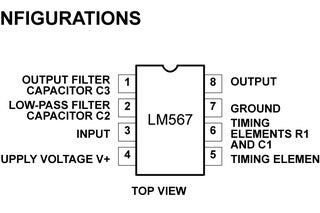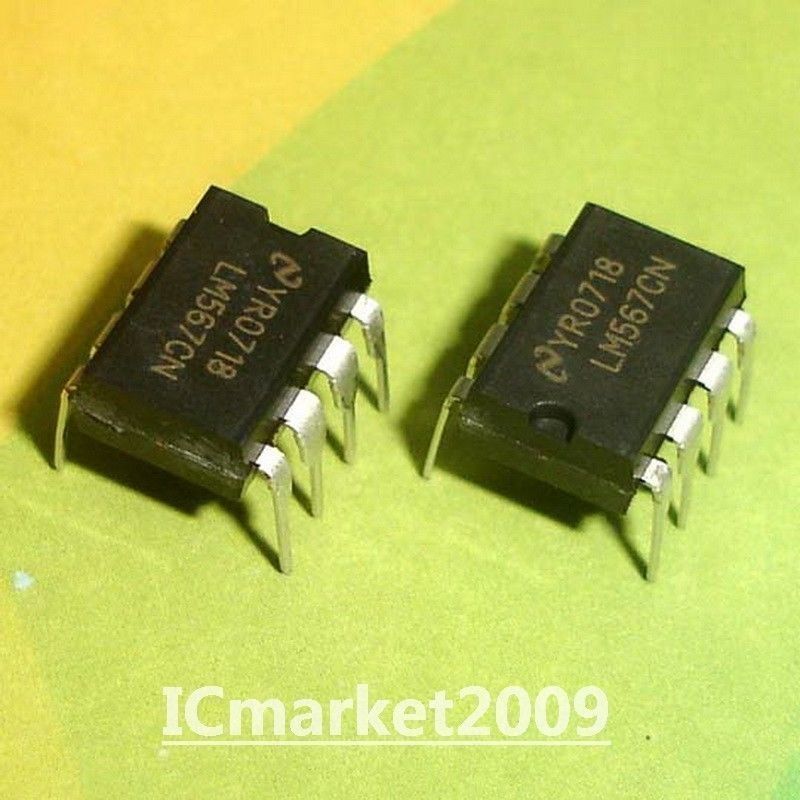
 |
|
|
|
#1
|
|||
|
|||
|
I present to you this important IC in the field of remote sensing, which is characterized by selectivity in detection, as you can specify the central frequency you want to search for, and it will detect that signal for you if it is present in the field. While rejecting other unwanted signals. Despite its simple appearance, the circuit is complex and consists of more than 62 transistors.
For full information and how to use, see the data sheet. With a note, it is used in detecting radio frequencies, light, infrared, sound, and radar modifications. It depends on the added sensor circuit. Note: You must study the data sheet well to be able to use it and work correctly. https://www.homemade-circuits.com/lm...-features-and/  
|
|
#2
|
|||
|
|||
|
Quote:
|
|
#3
|
|||
|
|||
|
Hello my friend Bahoum, and thank you for this nice intervention.
the resonance frequency in nature was calculated, it was found that the frequency of the basic metal of gold is 37 Hz and that of the silver metal is 87 Hz. These values vary according to the strength of the earth?s field in your area. We try to help in this area as much as possible while keeping things simple. The question that arises and which many disagree about is what type of signal we are looking for. * Chapter One: If the signal is electrical, and this is what I am convinced of, it resembles a spark, a cigarette lighter, or lightning in the form of pulses with very small amplitudes that can be detected using germanium or Schottky detector diodes with a demodulation feature and extracting the low frequency of the pulse. * Chapter Two: There are those who claim the ability of infrared rays to detect. If we use sunlight as an infrared transmitter and monitor its reflection from the Earth's surface and the magnitude of the pulsation, this may be a good solution in determining the center. $$ My important question that needs to be answered is if a radio frequency is directed at a metal surface, is it reflected with a modified imprint of the metal or is it reflected without modification? Thanks |
|
#4
|
|||
|
|||
|
Quote:
|
|
#5
|
|||
|
|||
|
|
|
#6
|
|||
|
|||
|
* When the radio frequency is reflected from the surface of the metal, it will carry with it the resonance of the metal, They create an amplitude and phase jump at each resonant frequency of the returned signal which is a technique used in radar.
* The resonance signal for metals is an electrical signal in the megahertz and gigahertz range. * Gold responds well to radio frequencies because of its high conductivity and does not corrode like other metals in the soil. The high density of gold makes it interact greatly with radio frequencies and has a significant effect on the radio frequencies reflected from its surface. It reflects the radio signal well * Metal detector radar uses radio frequencies to penetrate the ground to accurately detect metals. The best medium frequency range. This range is balanced with penetrating power and accuracy. * Schottkine diodes are better than germanium for detecting weak electrical signals. ( Pin diodes) are specialized in very small capacitances and are used when high-sensitivity detection characteristics are needed. * Photoelectric technology uses light to detect metal resonances by measuring changes in light $ The source of this information is artificial intelligence |
|
#7
|
|||
|
|||
|
Quote:
Hi Omar Personally i had made an IR receiver trying to demodulate any possible useful frequency that might be imposed on it. I tried for demodulating frequencies in the KHz range (strong signals) that exist in the area but the result was very dissapointing. The IR field behaved like it is a total dc field with not any short of fluctuations. Despite the high amplification stage i never got any response. I think that you should include in your research the diamagnetic property of the target. |
|
#8
|
|||
|
|||
|
I don't know
But if the resonance effect is a capacitive effect, the signal will not appear with high frequencies of infrared radiation. It will be lost within the carrier signal, so it is suitable for measurement only based on the intensity of reflection . ( Capacitive modulation is used for intermediate frequencies (AM)) . This may be an explanation that they prefer to use 250 kHz receiving resonance circuits in long-range metal detectors. Coincidentally, this frequency is also used to detect electrical signals. Magnetism cannot be relied upon to detect precious metals because they are non-magnetic metals. Most suitable for ferrous metals. 
|
|
#9
|
|||
|
|||
|
Quote:
Diamagnetic material means that opposes to any magnetic field change. So it also induces currents but in a direction so to oppose the incident magnetic field change. It is like the transformer effect. So magnetism and diamagnetism are the two mirror sides of the same coin. 
|
 |
| Thread Tools | |
| Display Modes | |
|
|